News
TIFF Interview: Benson & Moorhead on Designer Drugs, Time, and ‘Synchronic’

Justin Benson and Aaron Moorhead are two of the the most inventive and consistently impressive filmmakers working in the industry today. Like their previous films — Resolution, Spring, and The Endless — their latest film, Synchronic, has a creative blend of sci-fi elements and broader themes with a deep, human connection that emotionally grips the audience.
Set and shot in New Orleans, Synchronic loops in a star-studded cast with Anthony Mackie (Captain America: Civil War) and Jamie Dornan (50 Shades of Gray). I recently had the opportunity to sit down with Justin Benson and Aaron Moorhead to discuss the cast, the film, New Orleans, designer drugs, and their often used theme of time.
[You can read my full review of Synchronic here]
Kelly McNeely: So what was the genesis of Synchronic?
Aaron Moorhead: Where did it really begin? I guess we’ve got two that we like to talk about that we’ve tried to trace it to where exactly it all begins. Because we spend so much time together, there’s no watershed moment. One was being here in Toronto at a bar, and they were playing Back to the Future. And we were just laser glued to it, because it’s the best movie in the world. And just joking around about the fact that this movie completely falls apart if Marty McFly were black.
And, and then the other thing was, I think, actually, it was just the idea. The idea of a designer drug; that when it affects your perception, what it actually affects your perception of is the way that humans experience time. We experience it linearly, whereas physicists say that it’s actually all happening and has already happened at the same time on top of one another, but we can only access the linear way. And we realized that if, if drugs can do massive shifts in your perception, why couldn’t it do that? Basically access the fifth dimension.
Kelly McNeely: And I do love that kind of “time is a flat circle” explanation with the record player, I thought that was really excellent. What acted as inspirations or influences for you when making Synchronic? Other than Back to the Future, of course.
Justin Benson: Alan Moore, a lot of Alan Moore comic books.
Aaron Moorhead: Oh, man, I feel like we just kind of wanted to make a sci-fi Almost Famous or something.
Justin Benson: It was a little bit influenced by A Dark Song.
Aaron Moorhead: It’s a little in there, yeah.
Justin Benson: Which, by the way, that movie — we wrote a movie about that exact same ritual. But it was Aleister Crowley doing the ritual. And we saw [A Dark Song] at a film fest and thought, thank God we didn’t make it, we would have made the same movie.
Aaron Moorhead: I think that’s it, we often don’t point to a movie and be like, let’s do that movie. You know, it’s truly bits and pieces of like, this shot with the handheld operating is like Children of Men or, you know, that little stuff. Really little stuff. You know, actually, there’s tonal similarities between this and the monolith scene in 2001: A Space Odyssey, just the dread. And you don’t quite know why there’s a whole 30 minutes of that in our movie, hopefully.
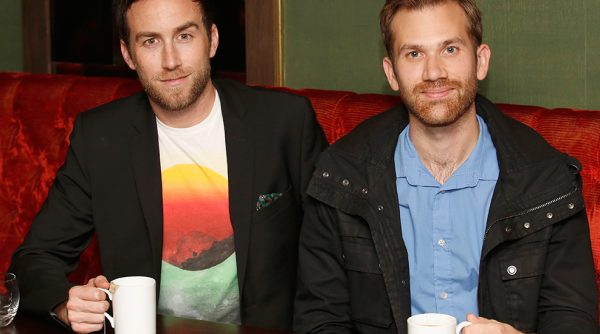
Justin Benson, Aaron Moorhead via Variety
Kelly McNeely: I noticed that time is sort of an ongoing theme with your films — it’s something that you like to explore a little bit. Can you talk about why time is such a fascinating concept, and why that’s something you keep coming back to?
Aaron Moorhead: I think we keep coming back to time because it scares us. It is an inexorable fact, we should be able to be comfortable with that fact. But we basically spend our entire lives trying to become comfortable with the fact that time will pass, everything you know will fall apart, and you eventually will as well. Everyone tries to become comfortable with it, that is one of the lifelong struggles. And the more comfortable you can be with it, the happier you will be. And that’s kind of what the movie is. But, it’s a fact that nobody in the world has accepted it, except for when you achieve Nirvana.
Kelly McNeely: As far as filming in New Orleans, was that sort of always the plan? Or did you just sort of decide, you know, we should do this here?
Justin Benson: The script is written specifically for New Orleans. It’d be such a huge rewrite, to put it in a different city. It’s written for New Orleans, because if you’re kind of stripping away the layers of time, there’s not really a better city in America to do that. I don’t know about drug laws in other countries, but I don’t know if there’s anywhere besides the UK where there are designer synthetic analog sold over the counter. I don’t know, here in Canada are there those?
Kelly McNeely: To a certain extent. I don’t think there are quite as many, but there are things you can buy.
Justin Benson: Probably like K1 and Spice. Not, like, bath salts or anything.
Kelly McNeely: No, we’re not that far yet.
Justin Benson: I was researching bath salts recently. And it turned out that, you know, there’s like instances of like, the guy who ate the guy’s face off, but it turns out that was not related to bath salts. That was just someone with mental illness.
Kelly McNeely: He just wanted to eat someone’s face.
Justin Benson: Yeah. But I’m almost curious, how did the bath salts thing end up in the press?
Who knows? And, by the way, they’re probably very dangerous, but there’s no peer reviewed medical journals about whatever these are. That’s the whole point of the marketplace, because they’re not studied. But yeah, it’s interesting. And I think there’s like a few different instances of that, where it’s like, oh, it actually had nothing to do with bath salts.
Kelly McNeely: I think having the synthetic drugs really opens up the possibilities of what you can do with that, because really, if you’re creating the synthetic drug, you can have it do anything you want, right?
Aaron Moorhead: That’s something that is really fun, the idea. I mean, synthetic drugs are honestly kind of scary, because it’s just like buying them from a drug dealer. They’re both unregulated, except the other one’s deliberately changing the drug [laughs]. So it’s really scary!
Justin Benson: The drug dealer ones are more reliable.
Kelly McNeely: Now, I noticed that you guys have a lot of really elaborate, really expansive set pieces that you got to play with. What was that like? Moving up to that the giant — I don’t want to say what some of the scenes are — but running through fields and things like that.
Aaron Moorhead: It’s something we actually always wanted to do, so that was not a daunting task at all, it was a “thank God, we finally get to do this”. In some ways, that step up felt a bit claustrophobic, because there’s so many more moving parts that once you lock into something, there’s no changing direction, especially if a misunderstanding happens.
But in other ways, it’s freeing because the really largest — the largest of the large stuff — was super smooth. They were something we just planned a whole lot. And then we just did it, and it was great. But it was funny, because it was only a few days of that where we were just like, man, we’ve got so many more resources, despite still being the smallest movie shooting in New Orleans at that time — it’s still a very small movie.
We were like, oh, all the parts of our brain that we use when we’re doing everything, they’re still all just lit up. If you were to take an MRI of us right then. Your mind is still thinking like, where’s the boom operator going to stand? You know, it’s still thinking of just editing in your head. And so we realized that honestly, the process didn’t really change. Just the actual physical things that are in front of the camera do.
Kelly McNeely: You guys do a lot of behind the scenes stuff — the editing and cinematography, things like that. Do you find that that is a lot more freeing for you? Does it give you a lot more flexibility, or do you find it more stressful?
Justin Benson: It’s the only way you really know how to do things. The process of discovery has become doing it — like getting your hands dirty, and figuring it out. But that said, the editor we work with has become a much better editor that we are on our own. But we still need to be doing it ourselves just to figure out how these things work best.
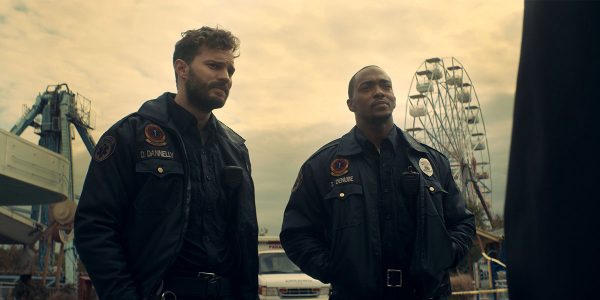
Synchronic via TIFF
Kelly McNeely: So working with Jamie Dornan and Anthony Mackie, how did that come into being?
Aaron Moorhead: There was an agent who just really likes independent film, who wandered into the last screening of The Endless at the North Hollywood indie theater, and went bonkers over it. And one of his clients was Jamie, and he was able to get it to him. And it was like a three day thing — it was just like, all right, let’s do it. And all of a sudden, once we had Jamie, that’s one of those things where you can then say, hey, who are the actors that we want to work with that have always wanted to work with Jamie. And Anthony was one of them. Luckily, he read the script and responded the same way. So it was very fast when it happened.
But the script was written in 2015. And until that person wandered into a movie theater, you know, we were making The Endless. But yeah, they were they were absolutely wonderful. First off, their existence made the movie happen. And then second off, their performance and their personalities off camera just made the whole thing easy.
Kelly McNeely: What do you guys love about working in genre cinema specifically? I know that’s a very broad question.
Aaron Moorhead: I like being able to hide the things that we want to talk about inside of a fantastic concept like a Trojan horse. Whereas if you don’t have the fantastic concept, it can either be boring or really proselytizing. But for us we can, we can hopefully make a movie that changes you by entertaining you. And you realize that something’s different by the end.
Kelly McNeely: And sort of speaking that Trojan horse, what did you want to try and sneak in with Synchronic? Was there anything specific?
Justin Benson: You know, there’s a very unfortunate movement in America right now to romanticize a past that was only good for a very small subset of the population. And that’s all based in the myth that there was this time that was so great. And that’s not honest. And there was something about telling a story about showing the past for the monster that it was.
Kelly McNeely: There’s no “great again”, right?
Aaron Moorhead: Yeah, the past sucks, and the present is a miracle. Those are both lines in the movie, but, that’s what we’re saying.
Kelly McNeely: What’s next for you guys? I know you usually have a bunch of projects on the go. What do you want to do next?
Aaron Moorhead: We have a new feature written, and we’re probably going to try to shoot that as soon as possible. As soon as this this is all wrapping up. And I think Synchronic will probably open some doors in terms of the real big stuff. So we’ll see on all of that, but nothing that I can — sorry about the vague, lame answer, but it’s not even that I don’t want to talk about it or I’m sworn to secrecy. It’s just if it doesn’t happen, then that’s just even lamer, you know? [laughs]
Kelly McNeely: Now with New Orleans, I know it’s such a rich historical place. Were there locations or settings that you wanted to really include or highlight?
Justin Benson: Interesting. I think some of the script was written from a memory of taking a trip to New Orleans. So it was written for like, what those locations were in our head. But then Aaron and I went and scouted it in 2016 — there was no financing, we just went literally by ourselves and looked around for locations to see what would work. And it turned out that from memory, those things were more or less correct. But then there were things that we didn’t even know existed when we put them in the script, like where the boulder is, for example. That was just an estimation of like, “this probably exists because the Mississippi River is right there”, and it turned out it was right there.
Aaron Moorhead: Abandoned Six Flags was always in the script. And our location manager was sweating bullets trying to make sure that we got it, because it’s a very hard location to shoot in. It’s been taken over by the wildlife and it’s dangerous. But, but yeah, I mean, that was cool.
Justin Benson: Yeah, and I think actually some of those locations were written out of like, Atlas Obscura website, like “what’s weird and creepy in New Orleans”, and finding it that way. So we’re really lucky we actually got to shoot in those places.
Kelly McNeely: The abandoned Six Flags is really amazing, that must have been such a cool location to shoot in.
Justin Benson: Yeah, they tell you they’re like it’s really hard because it’s all taken over by alligators and rattlesnakes. I only saw like three alligators there.
Aaron Moorhead: A few alligators. It’s because we had alligator wranglers. They were pros.
Kelly McNeely: Now this again is a very broad question, and I know the past sucks. But if you had to or could travel back to any particular time, would you want to, and when would you like to go back to?
Aaron Moorhead: You mean just to live in, or to warn the world about climate change?
Kelly McNeely: Both. Either or. You don’t have you stay there. You can have seven minutes there.
Aaron Moorhead: Got it, got it. Seven minutes. Ok.
Justin Benson: Oh, man. I think I don’t want to.
Aaron Moorhead: I don’t think I want to either.
Kelly McNeely: The past sucks.
Aaron Moorhead: [laughs] Yeah. The past just sucks. Yeah. I just think about like going back and being like, oh, man. All right. So there’s the early 2000s, like what Limp Bizkit, what? No, hang on, and then it’s like 90s shoulder pads? Ah! I can’t think of when in the 80s… Actually, no, I’d love to see The Stones really young on tour. That would be fun for seven minutes. Yeah, just to hear them play Satisfaction during the protest there. That would be cool.
For more on Justin Benson and Aaron Moorhead, check out our previous interview talking about The Endless.
'Civil War' Review: Is It Worth Watching?
Follow our new YouTube channel "Mysteries and Movies" here.

News
Watch ‘The Burning’ At The Location Where It Was Filmed
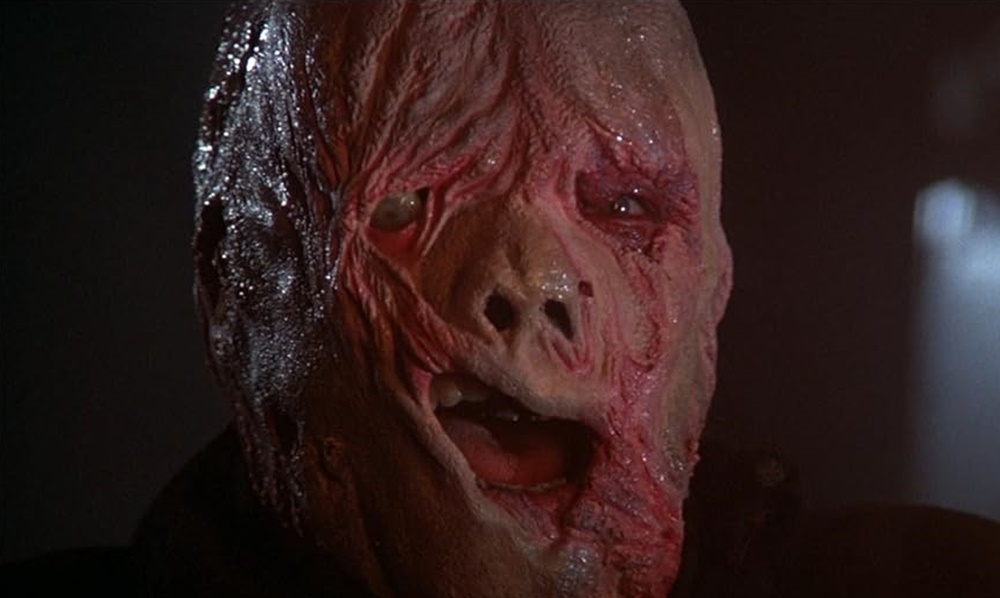
Fangoria is reporting that fans of the 1981 slasher The Burning will be able to have a screening of the film at the location where it was filmed. The movie is set at Camp Blackfoot which is actually the Stonehaven Nature Preserve in Ransomville, New York.
This ticketed event will take place on August 3. Guests will be able to take a tour of the grounds as well as enjoy some campfire snacks along with the screening of The Burning.
The film came out in the early ’80s when teen slashers were being churned out in magnum force. Thanks to Sean S. Cunningham’s Friday the 13th, filmmakers wanted to get in on the low-budget, high-profit movie market and a casket load of these types of films were produced, some better than others.
The Burning is one of the good ones, mostly because of the special effects from Tom Savini who had just come off of his groundbreaking work on Dawn of the Dead and Friday the 13th. He declined to do the sequel because of its illogical premise and instead signed on to do this movie. Also, a young Jason Alexander who would later go on to play George in Seinfeld is a featured player.
Because of its practical gore, The Burning had to be heavily edited before it received an R-rating. The MPAA was under the thumb of protest groups and political bigwigs to censor violent films at the time because slashers were just so graphic and detailed in their gore.
Tickets are $50, and if you want a special t-shirt, that will cost you another $25, You can get all the information by visiting the On Set Cinema webpage.
'Civil War' Review: Is It Worth Watching?
Follow our new YouTube channel "Mysteries and Movies" here.
Movies
‘Longlegs’ Creepy “Part 2” Teaser Appears on Instagram
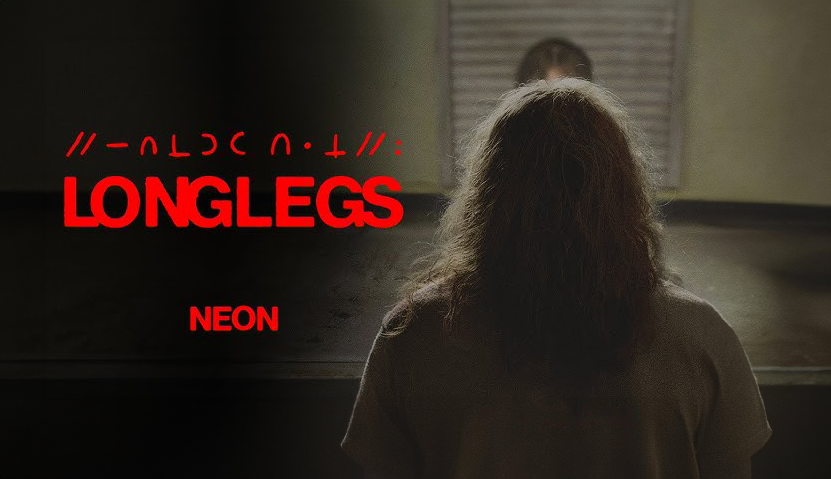
Neon Films released an Insta-teaser for their horror film Longlegs today. Titled Dirty: Part 2, the clip only furthers the mystery of what we are in for when this movie is finally released on July 12.
The official logline is: FBI Agent Lee Harker is assigned to an unsolved serial killer case that takes unexpected turns, revealing evidence of the occult. Harker discovers a personal connection to the killer and must stop him before he strikes again.
Directed by former actor Oz Perkins who also gave us The Blackcoat’s Daughter and Gretel & Hansel, Longlegs is already creating buzz with its moody images and cryptic hints. The film is rated R for bloody violence, and disturbing images.
Longlegs stars Nicolas Cage, Maika Monroe, and Alicia Witt.
'Civil War' Review: Is It Worth Watching?
Follow our new YouTube channel "Mysteries and Movies" here.
News
Exclusive Sneak Peek: Eli Roth and Crypt TV’s VR Series ‘The Faceless Lady’ Episode Five
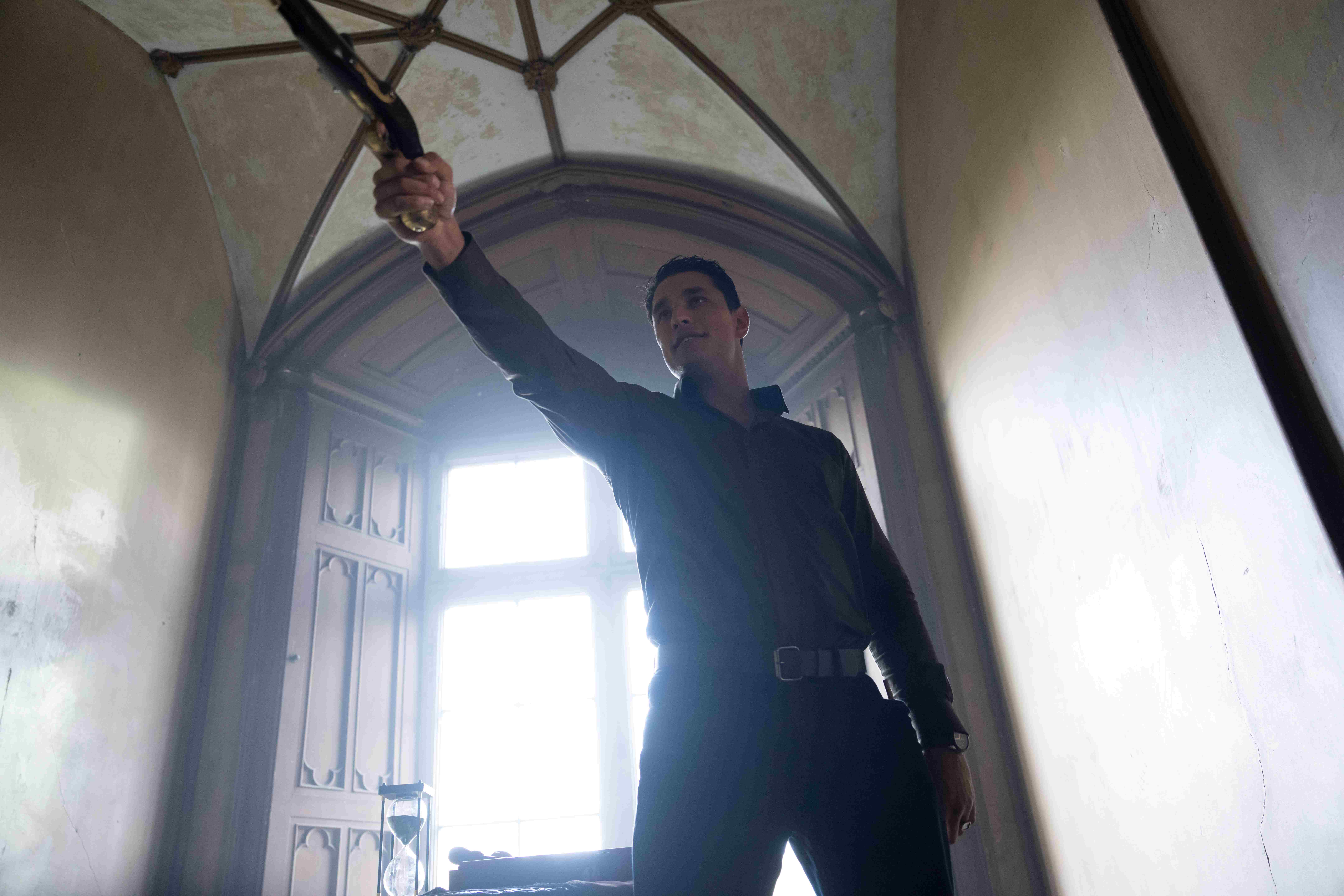
Eli Roth (Cabin Fever) and Crypt TV are knocking it out of the park with their new VR show, The Faceless Lady. For those unaware, this is the first fully scripted VR horror show on the market.
Even for masters of horror like Eli Roth and Crypt TV, this is a monumental undertaking. However, if I trust anyone to change the way that we experience horror, it would be these two legends.

Ripped from the pages of Irish folklore, The Faceless Lady tells the story of a tragic spirit cursed to wander the halls of her castle for all of eternity. However, when three young couples are invited to the castle for a series of games, their fates may soon change.
So far, the story has provided horror fans with a gripping game of life or death that doesn’t look as if it will slow down in episode five. Luckily, we have an exclusive clip that may be able to satiate your appetites until the new premiere.
Airing on 4/25 at 5pmPT/8pmET, episode five follows our final three contestants in this wicked game. As the stakes are raised ever higher, will Ella be able to fully awaken her connection with Lady Margaret?
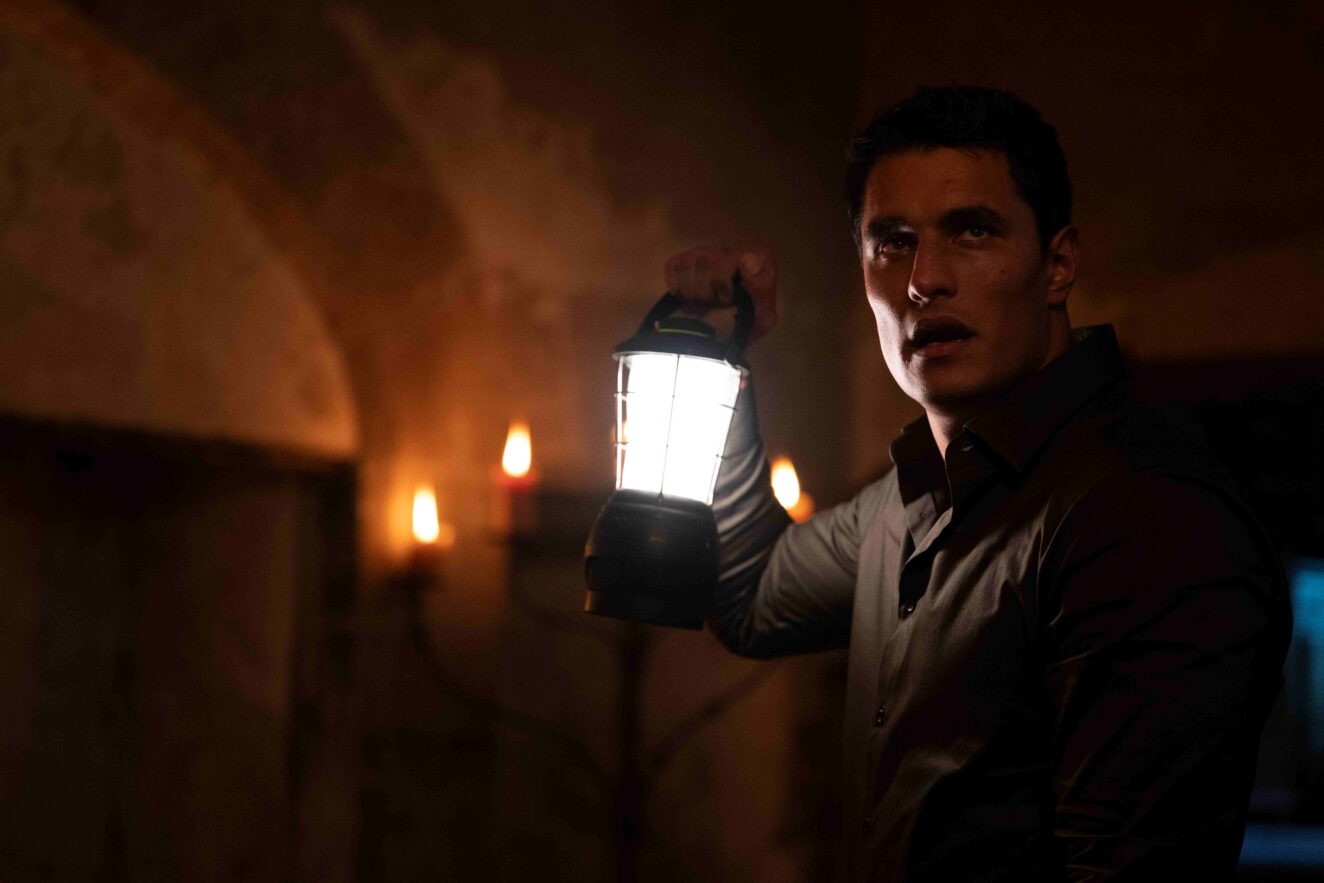
The newest episode can be found on Meta Quest TV. If you haven’t already, follow this link to subscribe to the series. Make sure to check out the new clip below.
Eli Roth Present’s THE FACELESS LADY S1E5 Clip: THE DUEL – YouTube
'Civil War' Review: Is It Worth Watching?
Follow our new YouTube channel "Mysteries and Movies" here.
-

 News6 days ago
News6 days agoWoman Brings Corpse Into Bank To Sign Loan Papers
-

 News5 days ago
News5 days agoBrad Dourif Says He’s Retiring Except For One Important Role
-

 Strange and Unusual5 days ago
Strange and Unusual5 days agoMan Arrested for Allegedly Taking a Severed Leg From Crash Site And Eating It
-

 Movies6 days ago
Movies6 days agoPart Concert, Part Horror Movie M. Night Shyamalan’s ‘Trap’ Trailer Released
-

 Movies6 days ago
Movies6 days agoAnother Creepy Spider Movie Hits Shudder This Month
-
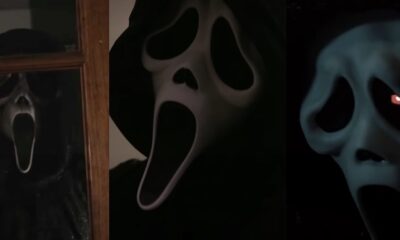
 Editorial5 days ago
Editorial5 days ago7 Great ‘Scream’ Fan Films & Shorts Worth a Watch
-
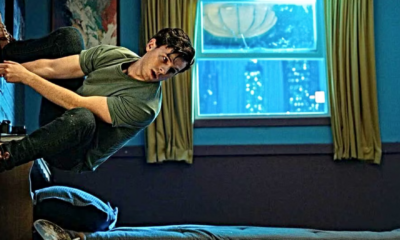
 Movies4 days ago
Movies4 days agoSpider-Man With a Cronenberg Twist in This Fan-Made Short
-

 News3 days ago
News3 days agoOriginal Blair Witch Cast Ask Lionsgate for Retroactive Residuals in Light of New Film
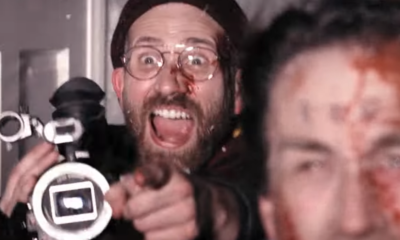

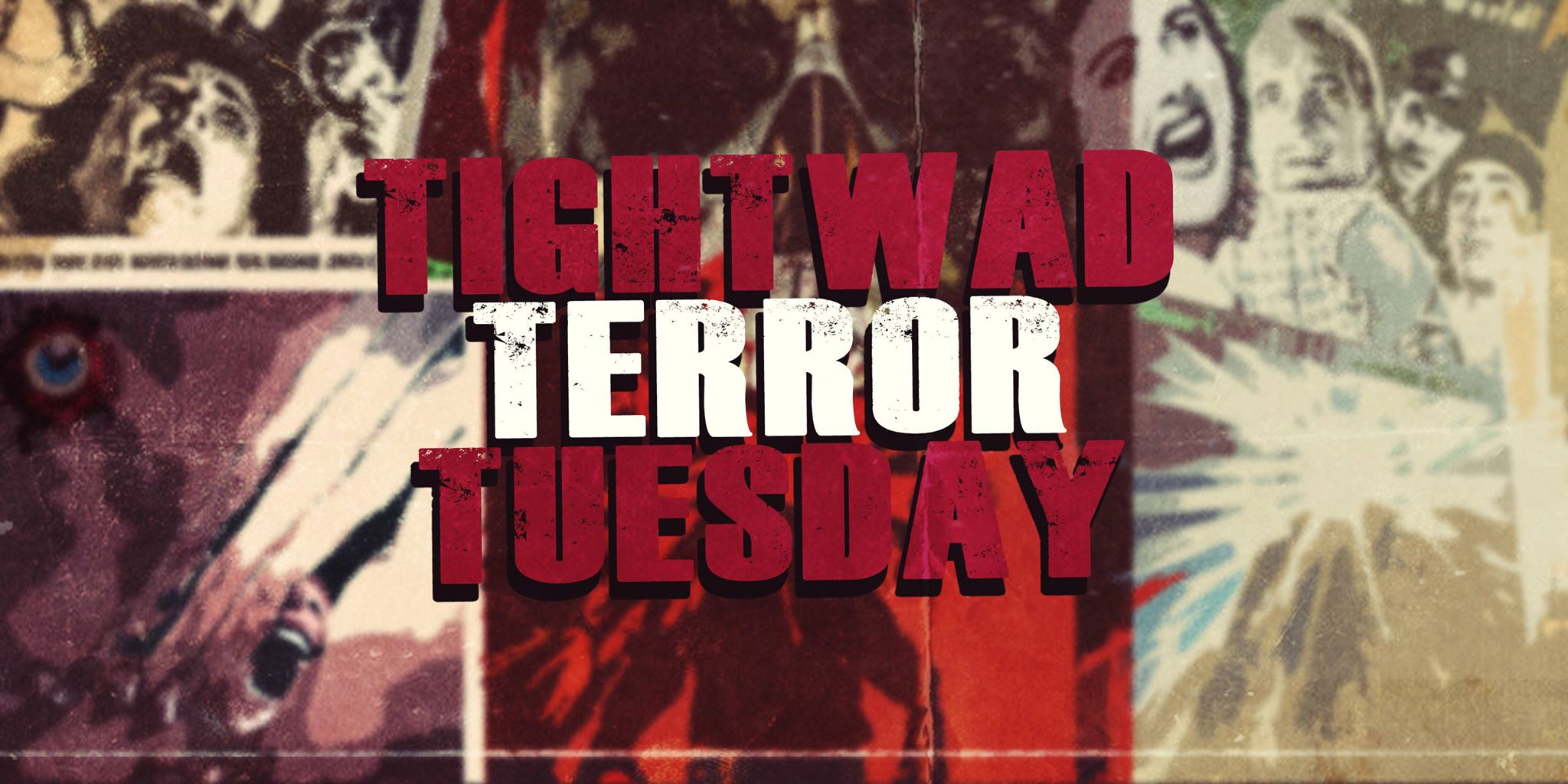
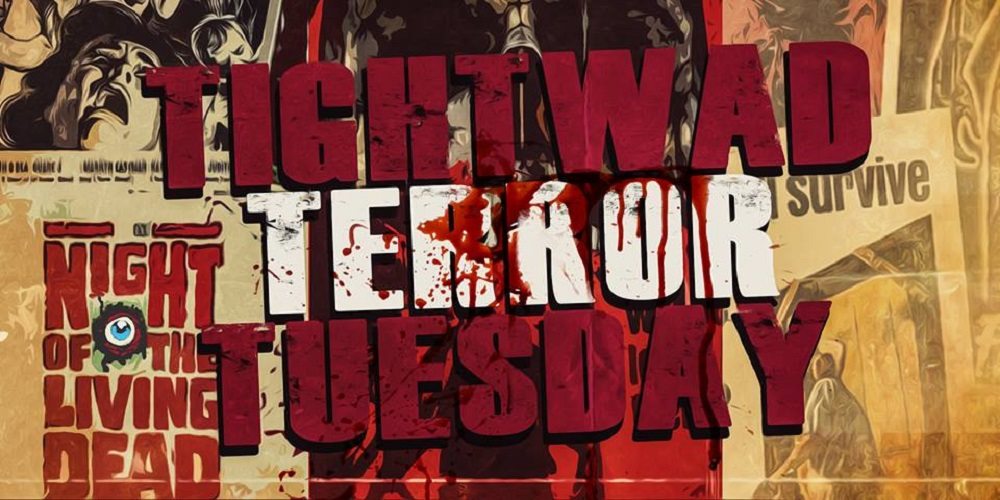




















You must be logged in to post a comment Login